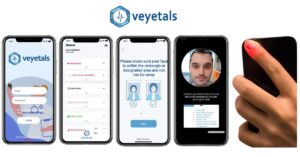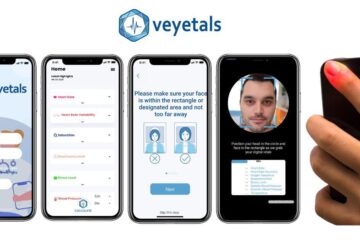Medically Reviewed By: Dr. Hanif Chatur
Table of Contents
ToggleKey Takeaways
- Telemedicine watches are advanced wearables that act as a comprehensive health dashboard on your wrist, offering continuous health data and integration with telehealth platforms.
- These wearables empower patients with insights, ensuring timely interventions, reducing healthcare costs, and providing utmost convenience by eliminating frequent clinic visits.
- The future of telemedicine watches promises AI integration, a broader range of monitored health metrics, personalized health recommendations, and enhanced virtual consultations.
The emerging symbiosis between technology and healthcare has recently brought us several innovations designed to make health management simpler and intuitive. Among these, telemedicine watches stand out as the trailblazers of modern healthcare, and promise to have a seismic impact on the world of remote patient monitoring. Come join us on our journey into the wonderful world of these advanced wearables, and discover how they’re revolutionizing health management.
What Are Telemedicine Watches?
Telemedicine watches are sophisticated wearables; they look like the now ubiquitous smartwatches, but pack a mean punch of sensors and technology that monitor divers health parameters. From tracking heart rates to oxygen saturation, these watches serve as a comprehensive health dashboard right on your wrist. They really are the “nurse on your arm”, though not like you had probably imagined.
The Features That Set Them Apart
Continuous Health Monitoring: Unlike traditional health check-ups that offer a periodic glimpse into your health, telemedicine watches can provide continuous data, allowing for timely interventions and adjustments.
Alert Systems: These watches can detect anomalies in vital signs and send instant alerts to users or healthcare providers, ensuring immediate action in potential emergencies.
Integration with Telehealth Platforms: Going a yard beyond mere monitoring, these watches can connect with telehealth apps, facilitating virtual consultations based on real-time health data.
Data Analysis & Trends: Advanced algorithms process the collected data to identify health trends, helping users understand their health patterns, make informed decisions and alert professionals to any anomalies or possible crises in the immediate future.
Benefits of Telemedicine Watches
Empowered Patients: Users gain insights into their health, fostering a sense of ownership and proactive healthcare management.
Timely Interventions: Continuous monitoring enables healthcare providers to address potential health issues as soon as they appear, often before they become severe problems.
Convenience: Wearables obviate the need for regular visits to a clinic for basic health metrics. All necessary data is available at a glance, making health management seamless and hassle-free.
Reduced Healthcare Costs: Preventive measures, timely interventions, and reduced clinic visits can lead to significant savings in healthcare expenses.
The Future of Telemedicine Watches
As technology continues to advance, the capabilities of telemedicine watches will expand. We can anticipate:
Broader Range of Metrics: Future watches might monitor glucose levels, hydration, or even stress markers, offering a holistic view of one’s health.
Integration with AI: AI algorithms could predict health issues based on current trends, offering truly proactive healthcare solutions.
Personalized Health Recommendations: Based on individual health data, these wearables could provide diet, exercise, and lifestyle recommendations tailored to the user.
Enhanced Telehealth Interactions: With richer data and integration capabilities, virtual doctor consultations will become more comprehensive and efficient.
In Conclusion: A New Era of Healthcare
Telemedicine watches are not just another tech fad; they are a testament to the future of healthcare. As we continue to embrace remote healthcare solutions, these wearables will play a critical role, blurring the lines between routine life activities and proactive health management. They symbolize a future where health monitoring is not a periodic event but an integrated part of our daily existence in real time.

Revolutionize Your Wellness Routine: Monitor Vital Signs Anywhere with Veyetals App

Experience the Future of Vitals Monitoring at HIMSS 2024

Understanding the Game-Changing Impact of Heart Rate Monitors on Cardiovascular Care and How You Can Use It
Unlock Your Health: Exploring the Power of Biometric Tracking for Wellness Insight

Revolutionizing ICU Patient Care: The Future of Contactless Monitoring Systems




